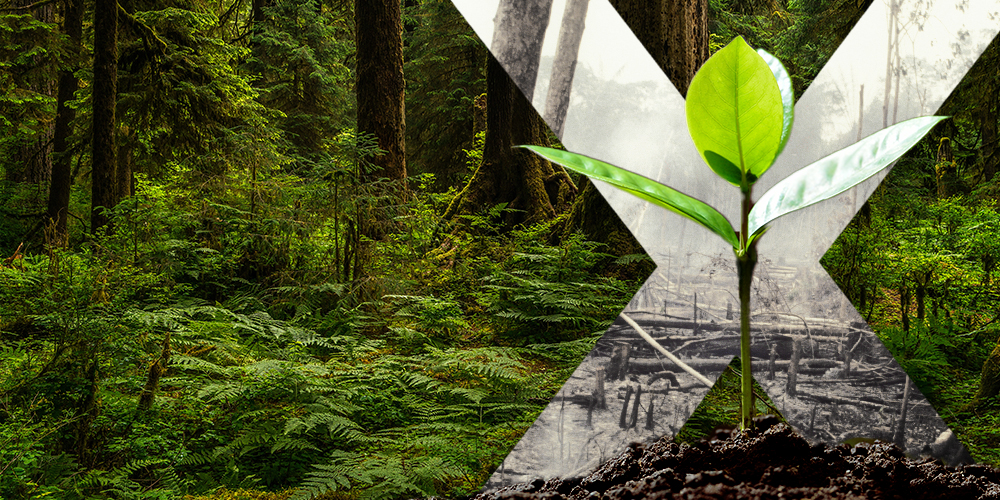Home » Reviving Larger Areas of Nature is Essential for Planetary Health—But Are We Prepared with the Necessary Seeds?
Reviving Larger Areas of Nature is Essential for Planetary Health—But Are We Prepared with the Necessary Seeds?

A significant portion of trees in Canada faces threats, and globally, many species are at risk of extinction. Restoring ecosystems is crucial for community resilience against climate change, regrowth after wildfires, and atmospheric carbon reduction. However, this task extends beyond simply planting seeds. Experts address challenges in restoration, including a global seed shortage and the risks of introducing too many trees.
Martina Albert, a technician at the National Tree Seed Centre (NTSC) in New Brunswick, emphasizes the importance of preserving local tree seeds through collaborations with Indigenous communities. The NTSC houses over 13,000 collections to safeguard genetic biodiversity amid rising threats from pests and climate change. The seeds stored represent living genetic material crucial for future restoration efforts.
Blaine Pearson, CEO of Seedark, has developed an app called Squirrel to modernize the seed collection and supply process by connecting growers with reforestation experts. He highlights the urgent need for ecological restoration, noting that only 3% of the Earth's ecosystems remain intact. Given that enhanced ecosystem services can mitigate climate change, fostering successful restoration becomes vital for survival.
Faisal Moola, an associate professor at the University of Guelph, points out that while nature can often bounce back, unprecedented wildfire intensity threatens even the resilience of established biomes like boreal forests. For the first time, these forests may not be recovering as they historically have, making active restoration necessary.
The experts recognize the existence of a seed problem, emphasizing that the supply for restoration is insufficient. Monoculture planting, driven by carbon offset goals, often arises from shortages of native seeds, creating a risk that restoration efforts may not promote diverse ecosystems. Strategies must involve local knowledge and indigenous rights to ensure sustainable practices that respect ecological and cultural diversity.
The Global Biodiversity Framework's signing in December 2022 highlights a push towards reversing biodiversity loss. With carbon market mechanisms still developing, experts suggest there's potential for collaborations to increase local engagement in restoration via higher quality carbon methodologies.
The importance of understanding how to effectively plan restoration efforts is increasingly crucial as ecosystems shift due to climate change. Pearson advocates for creating localized networks of seed collectors to enable community-led restoration tailored to specific habitats. Reflecting on the shifting climate, Moola introduces the need for "assisted migration," advocating for the relocation of seeds from areas with diminishing viability to new regions where they can thrive.
In practice, organizations like the Friends of the Rouge Watershed illustrate successful ecosystem restoration efforts. Jim Robb and D’Amour Walker showcase how a former garbage dump in Rouge National Urban Park has been transformed into a thriving ecosystem over 35 years, demonstrating the hard-won results of community efforts. The park now hosts diverse wildlife, emphasizing the rich biodiversity achievable through dedicated restoration practices.
Ultimately, the challenges of restoring nature call for profound collaboration and respect for traditional ecological knowledge. Effective restoration hinges on evaluating not just biophysical aspects but also the socio-ecological dynamics involved in these complex systems, ensuring future generations inherit robust ecosystems. Rather than just aiming for vegetation, successful restoration necessitates nurturing a holistic approach that fosters biodiversity.
MaRS Discovery District
https://www.marsdd.com/
MaRS is the world's largest urban innovation hub in Toronto that supports startups in the health, cleantech, fintech, and enterprise sectors. When MaRS opened in 2005 this concept of urban innovation was an untested theory. Today, it’s reshaping cities around the world. MaRS has been at the forefront of a wave of change that extends from Melbourne to Amsterdam and runs through San Francisco, London, Medellín, Los Angeles, Paris and New York. These global cities are now striving to create what we have in Toronto: a dense innovation district that co-locates universities, startups, corporates and investors. In this increasingly competitive landscape, scale matters more than ever – the best talent is attracted to the brightest innovation hotspots.


